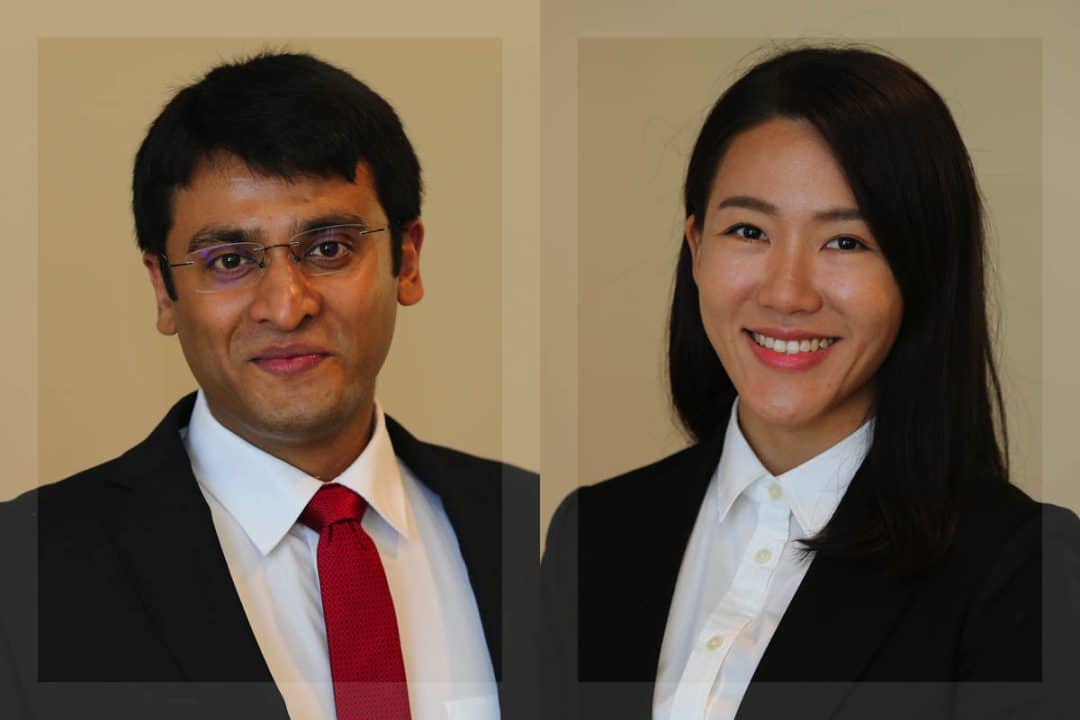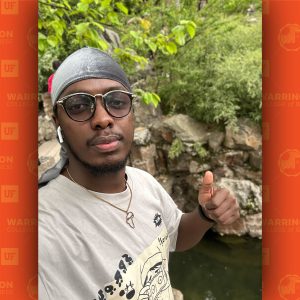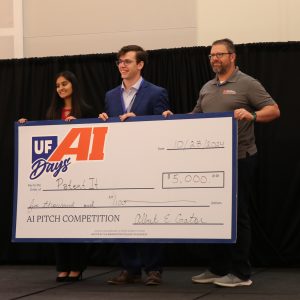Student Spotlight: Arjun Choudhary and Yeji Moon
GAINESVILLE, Fla. – MSRE students Arjun Choudhary and Yeji Moon were part of a five-person team that won an honorable citation at the Urban Land Institute Hines Competition, one of the toughest graduate student competitions in the field of real estate, development and design.
With over 200 teams participating in the event, the honorable citation puts them among the top nine teams in North America.
Choudhary, who served as the team captain, and Moon were joined by three University of Michigan students – Daniel Smit (Master of Architecture), Aditi Choudhary (Master of Architecture) and Vandhana Balchandran (Master in Urban Design). The group worked together despite being in different locations across the country and was assisted by faculty advisor Dr. Kent Malone, who serves as the Senior Lecturer of Real Estate Studies.
The competition challenged student teams to design and submit a master plan proposal that included presentation boards with drawings, site plans, tables, and market-feasible financial data for the North Branch Industrial Corridor, located in Chicago, Illinois.
1. What kind of process did you go through to come up with ideas that could translate to success for the study site?
CHOUDHARY: “We had to go through a thorough market and feasibility study about the area. We researched on the existing site conditions, urban fabric, existing asset classes, demographics, political orientations and accessibility by different modes of transportation just to name a few. The whole idea was to successfully respond to the needs of the society and make it a commercially viable project for the investors and institutions involved.
We benchmarked ourselves against winning entries from the past and did more than 10 case studies of similar projects both academic and actually executed to help with our analysis and development.”
MOON: “We did market research on rent price, demographics, lifestyles and real estate market conditions in the area, and we talked with a developer in Chicago to better understand the market. We also focused on the history of Chicago that used to be a manufacturing city. With intent to resist the decline of manufacturing, we proposed the workforce academy that could be a driver of the whole development.”
2. What were the biggest challenges for the group during the competition?
CHOUDHARY: “The biggest challenges we faced were:
- Putting the team together. It was tough to convince individuals to be a part of the team and sacrifice their personal time for an exhausting two weeks on a project which had no guarantee for success. Everyone was a graduate student with packed schedules.
- The physical distance was a big deterrent.
- Allotting different asset classes to the project was tough, as it required consensus on everyone’s part. There were a number of variations that would be good, but we had to all agree on a common ground.
- Lack of sleep! We were zombies for two weeks, sleep deprived and with a lot of work pending. We were working till 30 minutes before the end of the two-week deadline.”
MOON: “Since our team had a geographical gap, we had difficulty communicating. All of the team members had different time schedules. It was hard to get time to meet online. Furthermore, it was only two-week long project with a busy academic calendar. The time limitation was a huge challenge for us.”
3. How did you push through those challenges to put together a successful proposal?
CHOUDHARY: “I had to bait them with the prize money, added accomplishment on their resumes, and distinguishing factors in their job/internship hunts. I had to pass up an internship opportunity just to do this. Everyone made a lot of sacrifices to make this work. We used Google hangouts and GroupMe for the communication to be seamless. We also spent considerable time doing our background analysis and supporting data for our individual decisions. The best train of thoughts won and we went ahead in that direction. We also used coffee and motivation!”
MOON: “We had trouble communicating the first couple of days, but we allocated tasks individually and kept communicating with GroupMe. With the fact that we were the first team ever to participate in this daunting competition from our program, we were driven to do well and succeed.”
4. How did the MSRE program prepare you for the challenges you faced and the event as a whole?
CHOUDHARY: “The MSRE program was invaluable. We used a lot of critical thinking and problem-solving skills we learned in our market research and investment analysis classes. In doing our due diligence, the law class was a good basis for us. The Bergstrom Center helped us make connections through the Advisory Board, which we leveraged for acquiring local market intelligence for the project.”
MOON: “The STDB program we learned from market research class was very useful to understand the subject market. Understanding of investment analysis and the development class helped us a lot to make pro forma and overall development proposal. It was a good chance to apply our skill sets we gained from MSRE program into real-life problems.”




